CES 2007 Part I: Convergence Happened and the Most Impressive Demo of CES
by Anand Lal Shimpi on January 11, 2007 6:53 PM EST- Posted in
- Displays
ATI’s OCUR is Introduced
The most exciting story of last year’s CES was ATI’s OCUR (Open Cable Unidirectional Receiver) device; although at the time all we knew that it would officially launch when Vista was released due to its dependency on a protected path through the PC. With Vista’s retail release less than a month away, it’s no surprise that AMD (formerly ATI) had a final production version of its OCUR device on display and working at CES.
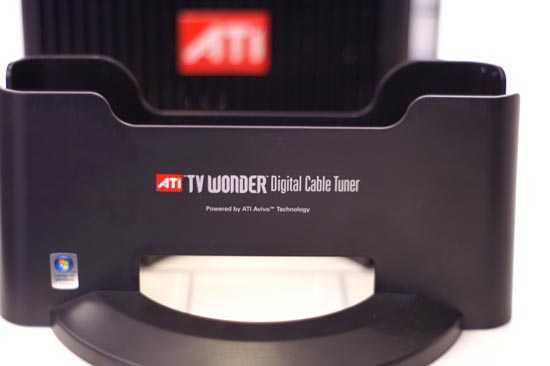
The official product name of OCUR is the ATI TV Wonder Digital Cable Tuner by AMD, and as expected it will be available in two versions: internal and external. The TV Wonder DCT is currently an OEM-only product and it will remain so until there’s enough trust built between the cable industry and the PC users in order to start making it more accessible.
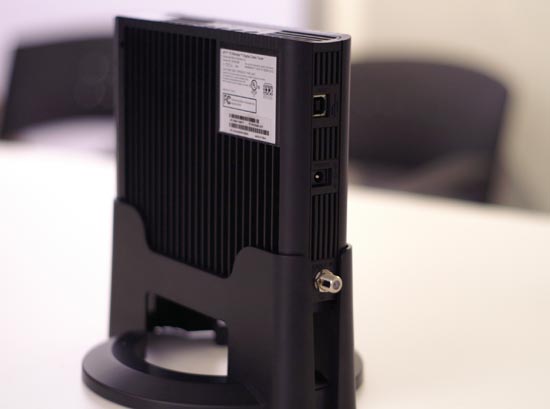
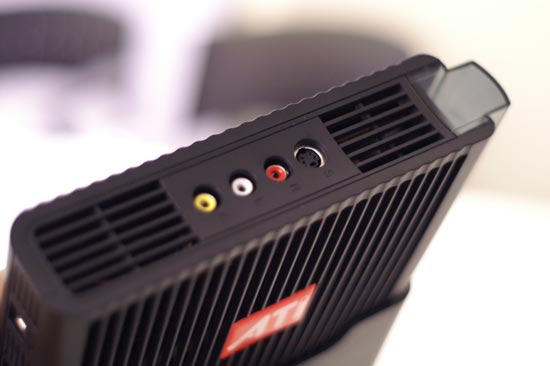
The TV Wonder has a set of AV inputs for external devices
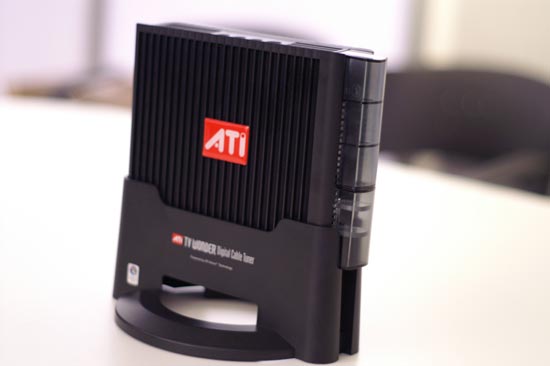
For those that don’t remember, the point of the TV Wonder DCT is to bring CableCard support to Windows Vista Media Center. Currently, you can’t use Media Center Edition to record digital cable or non-OTA HD content. AMD’s product is the only way of getting CableCard support on your PC, and implementation is fairly simple. You plug your cable into a coax port on the back of the unit and then plug the unit in to your computer via USB 2.0. The internal version also operates over USB, despite being a standard PCI card.
Your CableCard goes in a slot on the front of the TV Wonder; a cover slides open to reveal the CableCard slot:
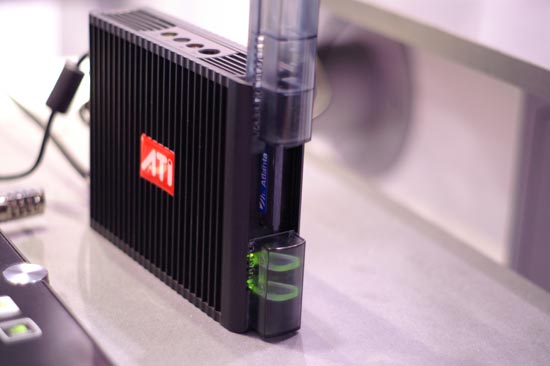
To enable support for the TV Wonder the motherboard must include a flag in the BIOS to tell Vista that it supports the tuner. There’s also a product ID that needs to be entered in Vista, but most OEMs will probably be entering this on their own so that it is completely transparent from the end user. It’s sounding like it won’t be too easy/feasible to simply take the unit and install it on a different computer from the one it originally came on.

Using the TV Wonder in Vista works just like any other tuner in Media Center, just change channels and record shows like you normally would, the only difference is that you now have access to premium and non-OTA HD content. Availability will be in OEM systems on January 30th with Vista’s launch.
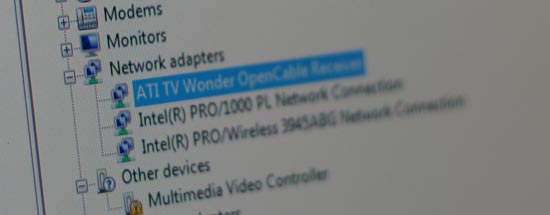










18 Comments
View All Comments
artifex - Monday, January 15, 2007 - link
I'm getting offers in the ads from companies who claim to offer "free" stuff provided you join a lot of trial offers and buy a bunch of stuff and sucker your friends into joining, also.Does Anandtech approve of these ads? Don't say you have no control over them, because you do. You can complain to your provider, IndustryBrains, or switch if they continue to show these things.
The suckier the ads are, the less credibility you have among people who see them, and the more likely everyone will use adblockers, which will kill your revenue.
artifex - Monday, January 15, 2007 - link
You guys must be too young to remember G-Force, the anime. :)When Nvidia announced their first GeForce product, I thought they might get sued, themselves. But of course, g-force is a term that predates either.
Houdani - Friday, January 12, 2007 - link
<--- that's me being grumpy about Toshiba & Canon not displaying the SED TVs at CES'07 due to legal wranglings with Nano-Proprietary. This, of course, is only pushing out their availability that much farther, further closing the window on this tech. Hrmph!semo - Friday, January 12, 2007 - link
why is that such an issue? what is performance? some numbers you couldn't care less when playing assuming the fps stay above a certain number. you expect performance to drop when enabling other eye candy, but when it comes to realism everyone seems to complain.this makes me think, are ppl buying better video cards for the increased "performance" or for the more immersive experience.
Houdani - Friday, January 12, 2007 - link
Physics doesn't necessarily have to mean that more polygons are pushed to the screen (such as when things go boom). When this happens, then it taxes the video card more and has a subsequent impact on performance. I think this relationship is understood and accepted.However, if the physics don't add more polygons but instead cause objects to interact more realistically then we're at the spot where we don't want overall performance to slow down. This is where Ageia needs to flex their strength and not disappoint their audience.
In *software* we already have the ability to have great physics, but at a loss to performance. For Ageia to excel, they necessarily have to remove that hindrance and give us the physics without the performance hit -- otherwise they've provided us with little or no benefit, really.
semo - Friday, January 12, 2007 - link
that makes sense. how much of a performance hit are talking here anyway. and how much of the physics calculations are outsourced to the ppu (and are there any big overheads as a result)LoneWolf15 - Friday, January 12, 2007 - link
It would be, if you can make sure this product is extremely difficult to damage.
I've seen way too many students that don't care how they treat something a school gives them --after all, it's (in their minds) not like they bought and paid for it with their own money (the concept that their parents' taxes did is irrelevant in their minds in those cases).
I agree that the concept is brilliant on paper, and it should be perfect for higher education. In the K-12 evnironment though, unless there's a way of accountability that works without making parents upset, or a way of making them durable enough that this is not an issue, this could be an idea that falls one tiny step short of a great finish.
bokep - Friday, January 12, 2007 - link
I've been following OLEDs since I first learned about it over half a decade ago. Nice to see it working that well and should be coming out within the next few years.CSMR - Thursday, January 11, 2007 - link
Great reviews, thanks for keeping the world updated!archcommus - Thursday, January 11, 2007 - link
...let's be serious here, LCD is surely getting the job done just fine.